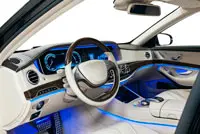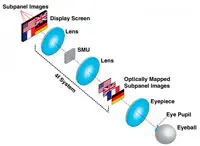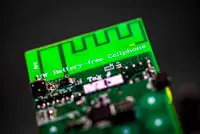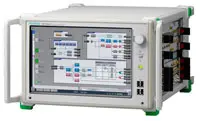Electronics News
Archive : 9 July 2017 год
 Layered double hydroxide (LDH) nanosheets have exceptionally high hydroxyl ion (OH-) conductivity, say a NIMS research group.
Layered double hydroxide (LDH) nanosheets have exceptionally high hydroxyl ion (OH-) conductivity, say a NIMS research group.
According to the researchers, the OH- conductivity is 10 to 100 times higher than that of conventional OH- conductors, and is the highest even among inorganic anion conductors.
LDH nanosheets may be applicable as solid electrolytes for alkaline fuel cells and water electrolysers, among other devices.
In fuel cells, hydrogen ion (H+) conductors are usually used as electrolytes. However, the use of H+ conductors requires the use of platinum-based catalysts.
It is said to be feasible to employ OH- in place of H+ as the conducting ion. When OH- is used, the operating environment is alkaline, allowing the use of iron, cobalt and nickel as catalysts, which the team claims reduces production costs.
The major issue with this approach, however, is that the conductivity of OH- in existing OH- conductors is low (10-3 to 10-2S/cm).
In this study, the research group exfoliated LDHs into single layers in chemical reactions, and measured the ionic conductivity of the resulting single-layer nanosheets. The nanosheets demonstrated high conductivities of up to 10-1S/cm at room temperature.
According to the team, the conductivity attained in this study is higher than that of any other OH- conductor reported previously.
The researchers believe the study’s findings may serve as a major step toward the realisation of solid fuel cells.
Author
Peggy Lee
Source: www.newelectronics.co.uk
 Melexis has unveiled a new LIN-to-LIN gateway that looks to overcomes the limitation of just 16 devices on a typical LIN bus. Each of the devices, the MLX81120, connects as a LIN slave on the main LIN bus and is controlled directly from the vehicle's Body Control Module (BCM).
Melexis has unveiled a new LIN-to-LIN gateway that looks to overcomes the limitation of just 16 devices on a typical LIN bus. Each of the devices, the MLX81120, connects as a LIN slave on the main LIN bus and is controlled directly from the vehicle's Body Control Module (BCM).
According to the company the new device will enable up to 16 LIN RGB slave modules on a private LIN bus, permitting up to 196 LED lighting devices to be connected to a single BCM via a LIN bus.
Fully featured, this second generation LIN-to-LIN gateway is based upon the MLX16 RISC CPU application controller. The 16-bit MCU includes 32kB Flash (with ECC), 16kB ROM, 2kB RAM and a 380b EEPROM (with ECC). The ROM also comes pre-loaded with a LIN driver, bootloader, math library and an RGB colour mix algorithm.
The LIN slave protocol controller operated up to 19.2kBaud and is compliant with LIN 2.x and SAE J2602. This block processes frames autonomously, ensuring that there are very few interrupts to the main application.
Also included are a master and slave LIN transceiver, both of which are also compliant with LIN 2.x and SAE J2602. The 2nd master transceiver enables a decentralised ambient lighting architecture within a car, which makes it possible to easily add and/or change lighting functions for different car models or equipment options without changing the complex body control module or light ECU.
Extensive I/O capability is built in including four high voltage I/O lines, 16-bit PWM outputs, interrupt capable inputs and a 10-bit ADC with an integrated pre-driver. The MLX81120 has a highly efficient voltage regulator that consumes just 20μA in sleep mode. Other features include LED temperature compensation, LED leakage compensation / control and an integral battery and temperature monitor.
The MLX81120 is flexible and can be configured to meet customer needs via the flash memory and requires only three external components for LIN RGB, thereby saving board space and reducing the overall cost of the solution.
Commenting Michael Bender, Product Line Manager Lighting for Melexis said: "Automotive is a core market for Melexis. As lighting solutions proliferate, especially within the cabin, designers have told us they need a simple way to overcome the architectural limits of the LIN bus. The MLX81120 allows lighting bus segmentation and extension for future use cases. Furthermore, it reduces the board space (and cost) significantly, while providing a number of useful features and protections.”
Author
Neil Tyler
Source: www.newelectronics.co.uk
 An optical mapping 3D display that makes VR viewing more comfortable has been created by researchers at the University of Illinois at Urbana-Champaign.
An optical mapping 3D display that makes VR viewing more comfortable has been created by researchers at the University of Illinois at Urbana-Champaign.
Eye strain, motion sickness, and fatigue are frequent physical complaints that limit the time that can be spent in a VR environment.
According to the team, most current 3D VR/AR displays present two images that the viewer's brain uses to construct an impression of the 3D scene.
When looking at an object, a person's eyes focus on the object, converge or diverge, then accommodate for distance.
The stereoscopic 3D images, however, are displayed on a single surface but are slightly offset to create the 3D effect. The person’s eyes have to work differently than usual, converging to a distance that seems further away, but focusing on an image that is centimetres from their face.
To overcome these stereoscopic limitations, the researchers created an optical mapping near-eye 3D display method, which divides the digital display into subpanels. A spatial multiplexing unit (SMU) is said to shift the subpanel images to different depths with correct focus cues for depth perception.
But unlike the offset images from the stereoscopic method, the researchers claim the SMU aligns the centres of the images and blends them together, making a seamless image.
"People have tried methods similar to ours to create multiple plane depths, but instead of creating multiple depth images simultaneously, they changed the images very quickly," assistant professor Liang Gao said in an OSA news release. "However, this approach comes with a trade-off in dynamic range, or level of contrast, because the duration each image is shown is very short."
Author
Peggy Lee
Source: www.newelectronics.co.uk
 A cell phone that requires no batteries has been invented by University of Washington researchers. The phone is said to harvest the few microwatts of power it requires from either ambient radio signals or light.
A cell phone that requires no batteries has been invented by University of Washington researchers. The phone is said to harvest the few microwatts of power it requires from either ambient radio signals or light.
"We've built what we believe is the first functioning cell phone that consumes almost zero power," said associate professor Shyam Gollakota.
To achieve this, the team of scientists removed the need to convert analogue signals into digital data. Instead, the battery-free cellphone takes advantage of the vibrations in a phone's microphone or speaker that occur when a person is talking into a phone or listening to a call.
An antenna connected to those components converts that motion into changes in standard analogue radio signals emitted by a cellular base station.
To transmit speech, the phone uses vibrations from the device's microphone to encode speech patterns in the reflected signals. To receive speech, it converts encoded radio signals into sound vibrations that that are picked up by the phone's speaker.
"You could imagine in the future that all cell towers or Wi-Fi routers could come with our base station technology embedded in it," said doctoral student Vamsi Talla.
The battery-free phone does still require a small amount of energy of up to 3.5µW to perform some operations.
The researchers demonstrated how to harvest this small amount of energy from two different sources. The prototype is said to operate on power gathered from ambient radio signals transmitted by a base station up to 31 feet away.
Using power harvested from ambient light with a tiny solar cell, the researchers claim the device could communicate with a base station that was 50 feet away.
Author
Peggy Lee
Source: www.newelectronics.co.uk
 Looking to offer a higher level of integration, Anritsu has released a signal quality analyser (SQA) which supports next generation telecoms, data centre and storage network transmission standards such as 100GbE-KR4/CR4, 200GbE and 400GbE as well as the latest and future high speed serial interface standards, including PCIe Gen 4, Thunderbolt Gen 3 and USB Gen 3.1.
Looking to offer a higher level of integration, Anritsu has released a signal quality analyser (SQA) which supports next generation telecoms, data centre and storage network transmission standards such as 100GbE-KR4/CR4, 200GbE and 400GbE as well as the latest and future high speed serial interface standards, including PCIe Gen 4, Thunderbolt Gen 3 and USB Gen 3.1.
“As of today, no other test and measurement company has a platform that tests all these new technologies at the same time,” said Alessandro Messina, EMEA wireline business marketing senior manager.
“The evolution to higher speed and to pulse amplitude modulation requires multiple testing channels, which means our test and measurement solutions must have multiple transmitters, interfaces and receiver interfaces to generate and receive signals and test the device.”
The new measurement platform MP1900A – and bit error rate tester – features 16 testing channels and eight slots.
Addressing the R&D market, the MP1900A is an all-in-one solution that measures high speed interface designs during the early development stage in electronic and optical devices, including optical transceivers used in servers and communications equipment, and optical transceivers/modules for M2M and IoT applications.
The built-in pulse pattern generator has an intrinsic jitter of 115fs rms, as well as typical Tr/Tf of 12ps. Total peak-to-peak jitter is 6ps max. and typical input sensitivity of the internal error detector is 15mV.
A link negotiation function is used to connect the SQA to the DUT for improved bus interface evaluation. Engineers can use the function to conduct PCI Express Gen 4 and Gen 5 tests, LTSSM status analysis, jitter generation, and CM/DM noise injection.
“Our platform has all that it takes to also test PCI Express for generations 1, 2, 3 and 4 and it is already ready for generation 5, which will come in one or two years from now,” Messina added.
Author
Peggy Lee
Source: www.newelectronics.co.uk

